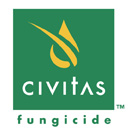
Chemical pesticide application has been the dominant form of disease control on heavily managed turf for decades. However, societal pressures in many locations over the past several years have led to the search for alternative methods of disease control. One of these alternatives is activated disease resistance, which involves using a plant’s own defense arsenal to combat disease. Activated resistance can occur following treatment with chemicals, such as Civitas, which commonly display minimal direct antimicrobial activity and are generally considered safe for field application.
This talk will briefly discuss how traditional chemical fungicides work, then move into alternative forms of disease control with emphasis on activated resistance. We will look at natural barriers to pathogens and the difference between a resistant and susceptible plant, as well as how a susceptible plant can be activated to defend itself. Aspects of Systemic Acquired Resistance (SAR) and Induced Systemic Resistance (ISR) will be outlined, including signaling, production of defense-related proteins and what types of pathogens they control. We will also discuss what other types of benefits can be seen during activated resistance responses in plants. Data slides from research conducted on Civitas will be used to compliment the talk.
About the instructor
Brady Nash is a product specialist within R&D at Petro-Canada Lubricants Inc., a Suncor Energy business. Nash obtained both his bachelor’s and master’s degrees at the University of Guelph, just outside Toronto, Ontario. His research focused on molecular aspects of plant disease resistance, particularly inducing resistance (SAR/ISR) in creeping bentgrass to various diseases, both in the lab and in the field. He is originally from Calgary, Alberta, although he has spent much of his life in and around the Toronto area.